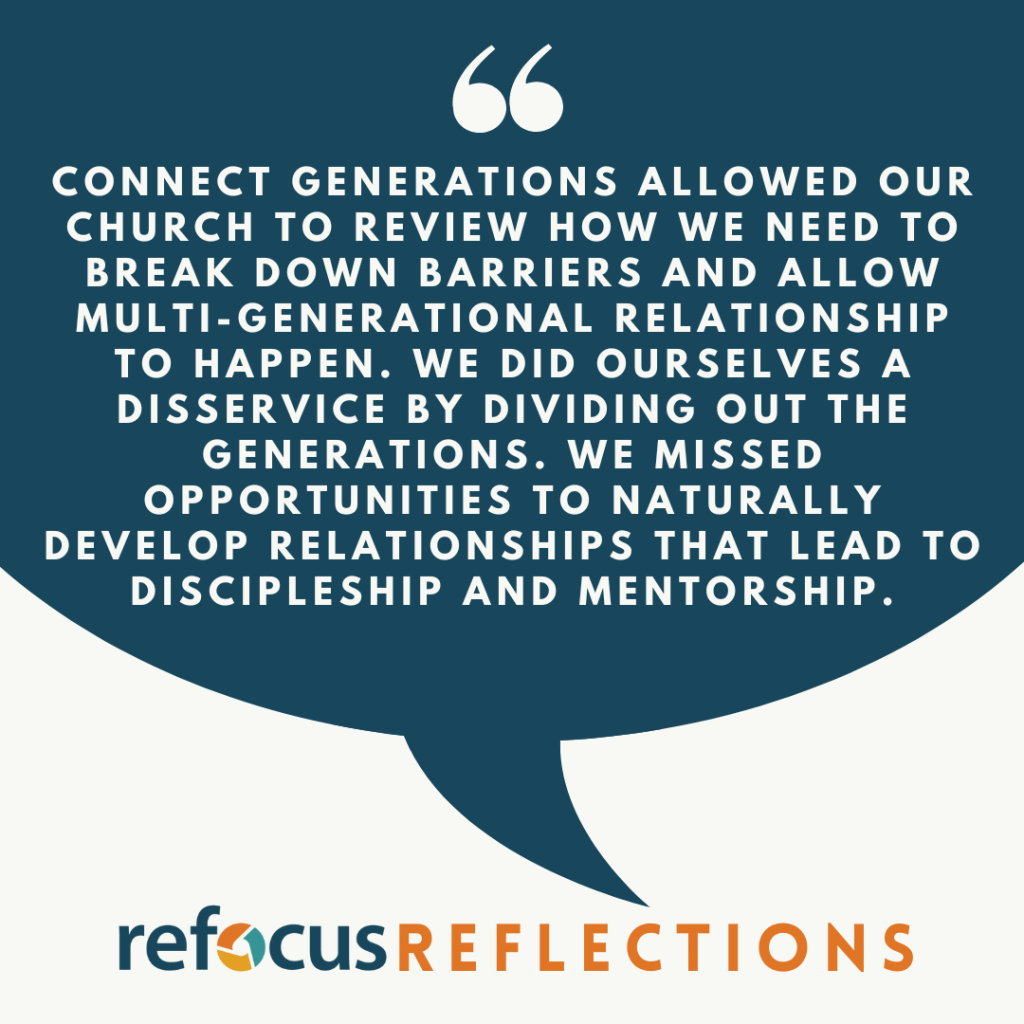Connect Generations Coaching is a one-time intensive coaching experience that uses a research-based ministry assessment tool designed for churches to complete in less than a week. You'll work directly with Christina in this unique coaching experience that offers specific insight into the barriers and bridges to connect generations in your faith community.

How Does it Work?
Connect Generations is a guide that helps you understand the make-up of your faith community by gathering information that enables you to identify bridges and barriers to generational discipleship between your church members.
After collecting the data outlined in the assessment, you will answer three questions to help you determine where generations are able to connect, form relationships, and grow in discipleship together.
Once you submit your answers, Christina will create a personalized chart with your community dynamics and meet with you for a 90-minute coaching session to identify specific bridges and barriers and make an action plan for the future.
Discover the Bridges and Barriers in Your Church by Identifying
Constructs of Age Segregation & Integration

Institutional
This construct includes such things as leadership structure, committee membership, programming and services offered by the church. Think of this section as the “bones” of your church body; the skeleton that gives shape and structure to your congregation.
Spatial
This construct looks at all the things that shape your physical experience like building design, worship space design, hallway design and common spaces. Think of this section as the “flesh” of your church body; the appearance that gives context and personal touch to your congregation.


Technological
This construct includes all things tech or media like your website, social media pages, written or print materials, and verbal announcements. Think of this section as the “senses” of your church body; the information that gives sight, sound, smell, and taste to your congregation.
Relational
This construct is the one we tend to think about the most when it comes to community. It includes the age-integrated spaces in your church, Sunday School classes and mid-week opportunities, and church activities outside the building. Think of this section as the “life” of your church body; the actions and activities that bring movement and interaction to your congregation and into your community.

Frequently Asked Questions
What if we don't have or can't collect all of the data?
The list of data to collect for each individual construct is an example of the types of things you should be observing in order to answer the questions for that section of the assessment. It is not an exhaustive list (you might want to add to it) nor is it a prescriptive list (you may not be able to collect all of that data). What you should use the list for is a guide to help you observe the right areas of the church for that particular construct.
What if a question doesn't seem to apply to the data we've collected?
Since we are asking the same three questions in each area, you may find that the question is easier or harder to answer depending on the data you’ve collected. Sometimes the answer is a both/and rather than a yes/no. That’s completely fine. Your answers can be a long or as short as needed based on the information you have and the observations you make within a certain construct.
What are the ongoing benefits of completing the assessment?
Following the completion of the assessment, you will meet with Christina to go over your results. During the 90-minute coaching session, you will identify the bridges and barriers to age integration in your community and leave the coaching time with up to three actionable steps to connect generations in your church. You will also have a chart to compare your progress over time from where you started to where you are.


